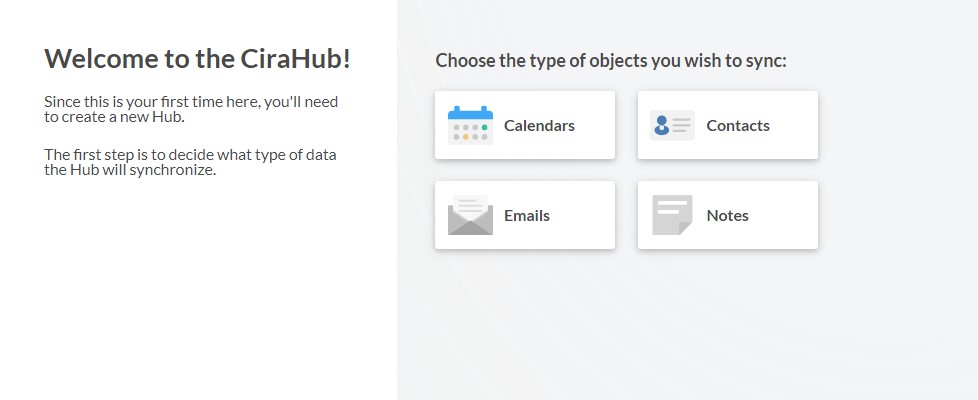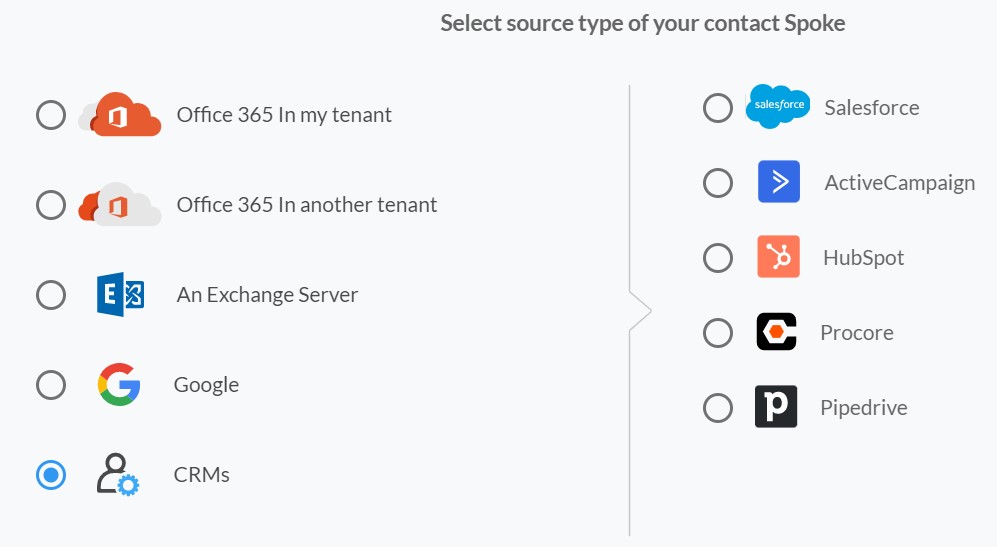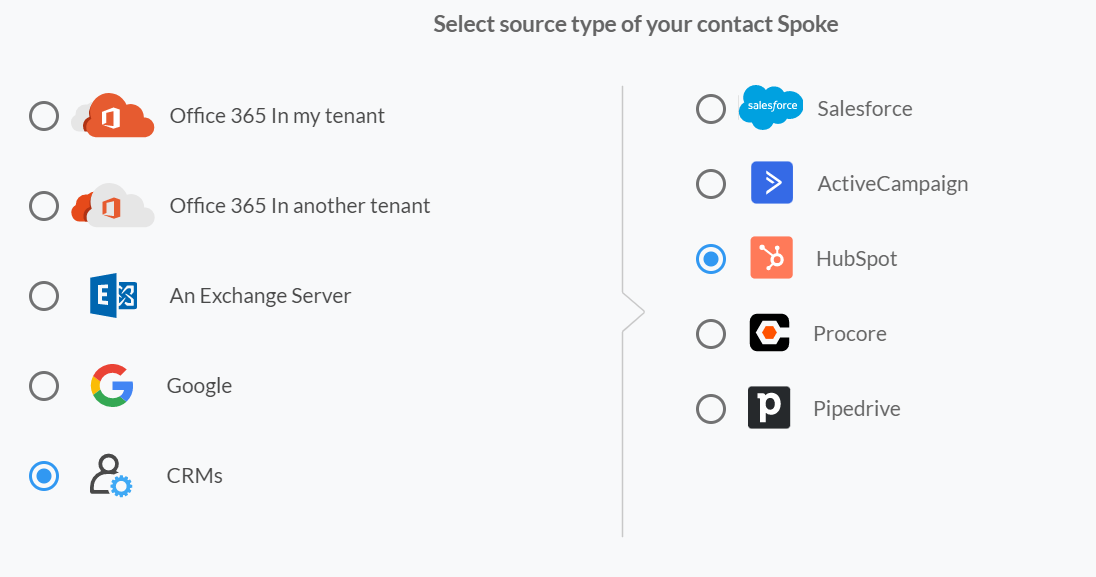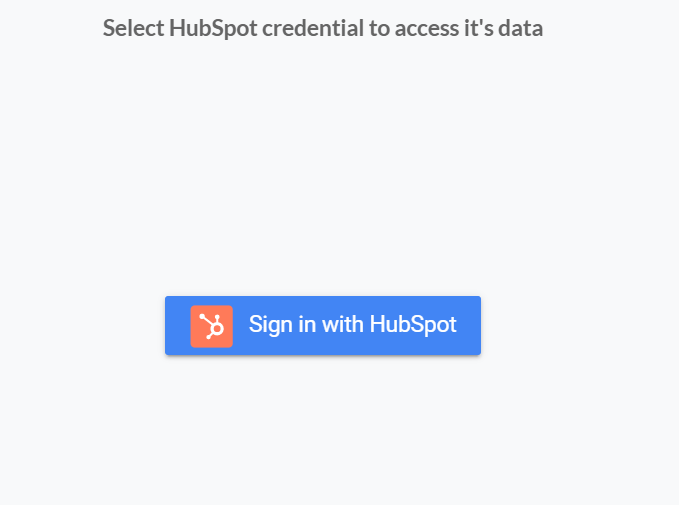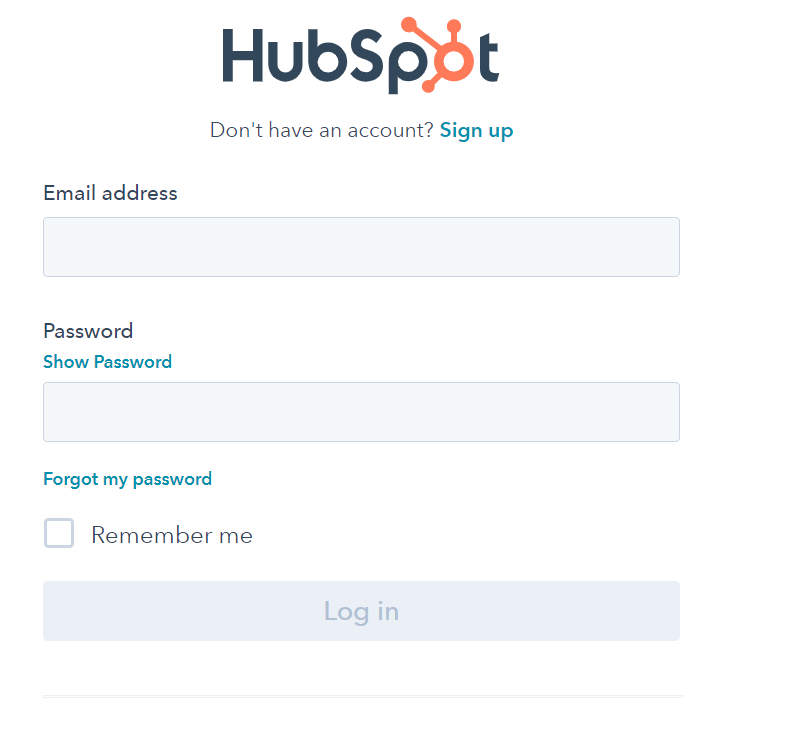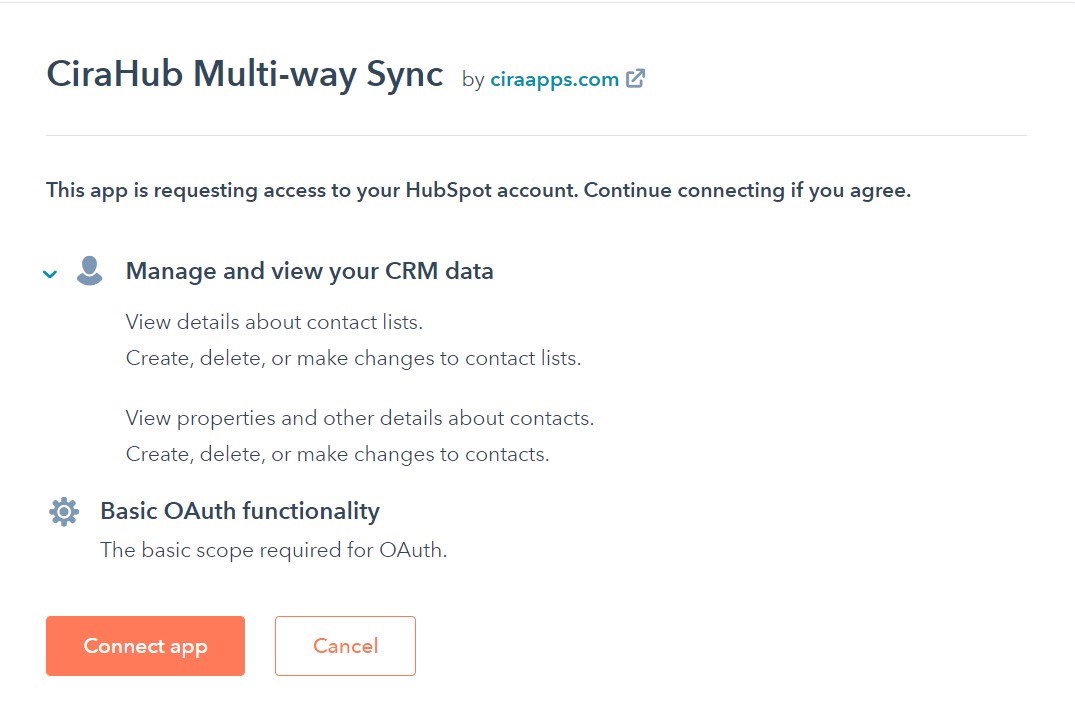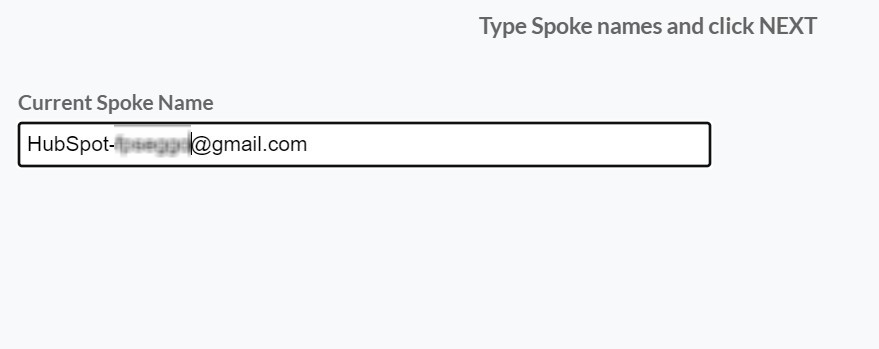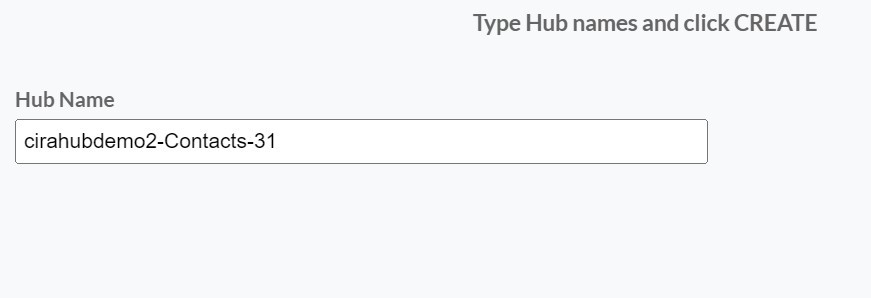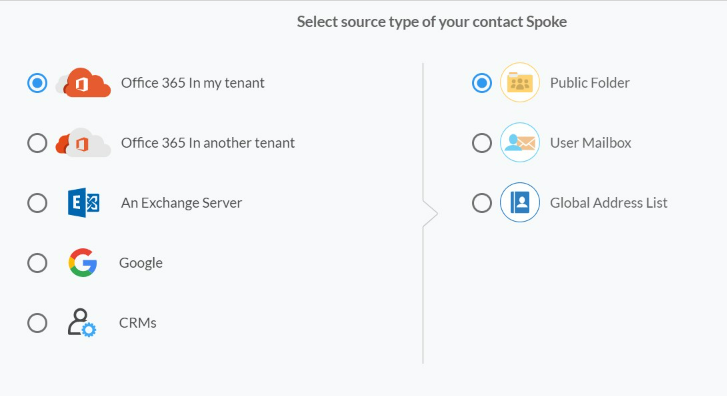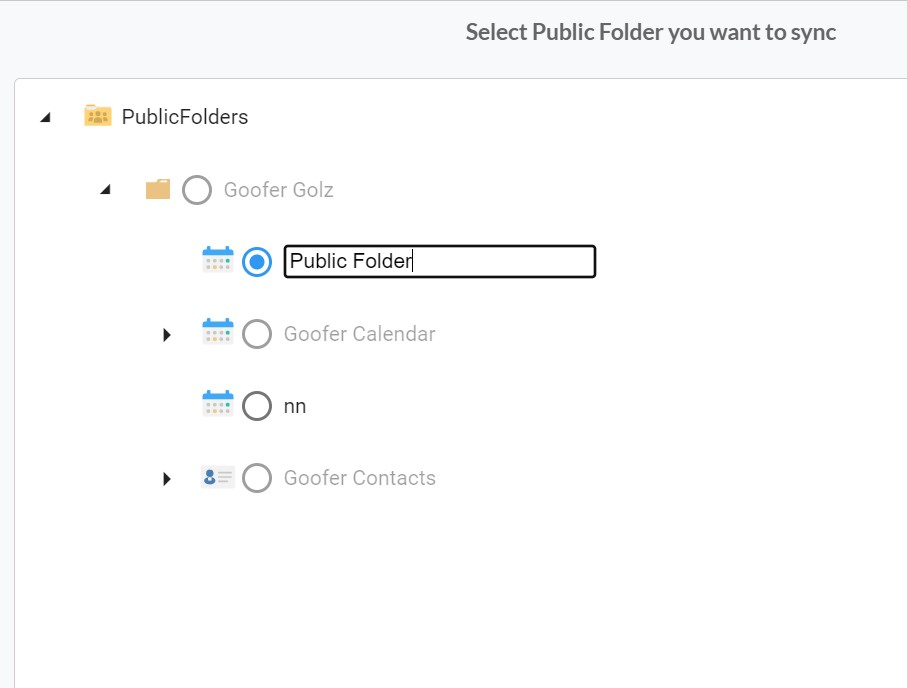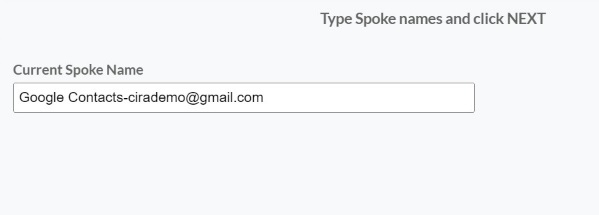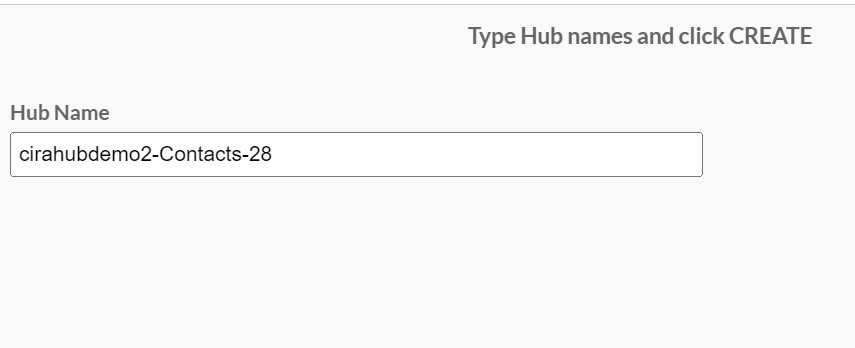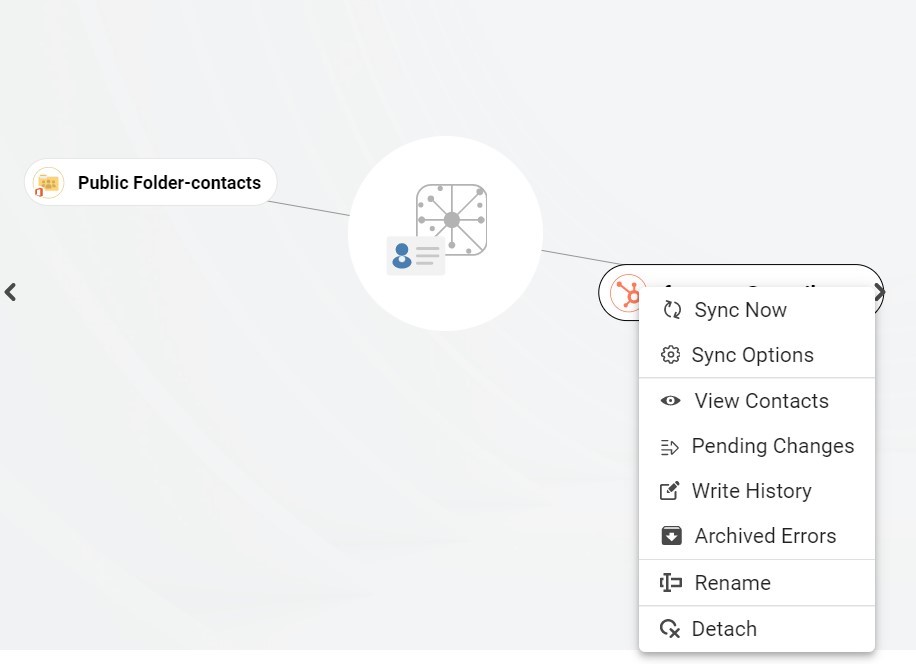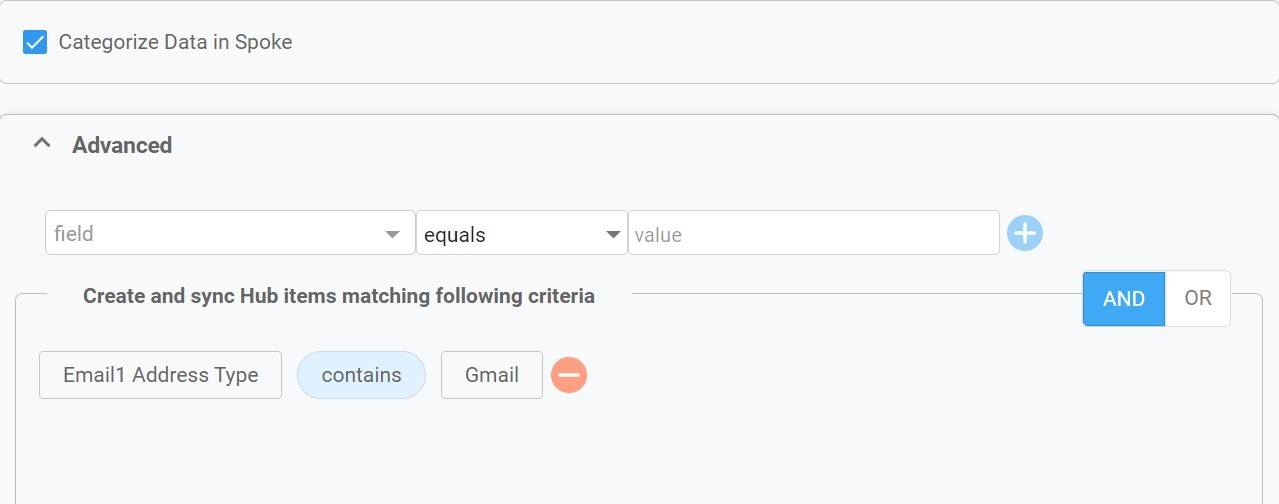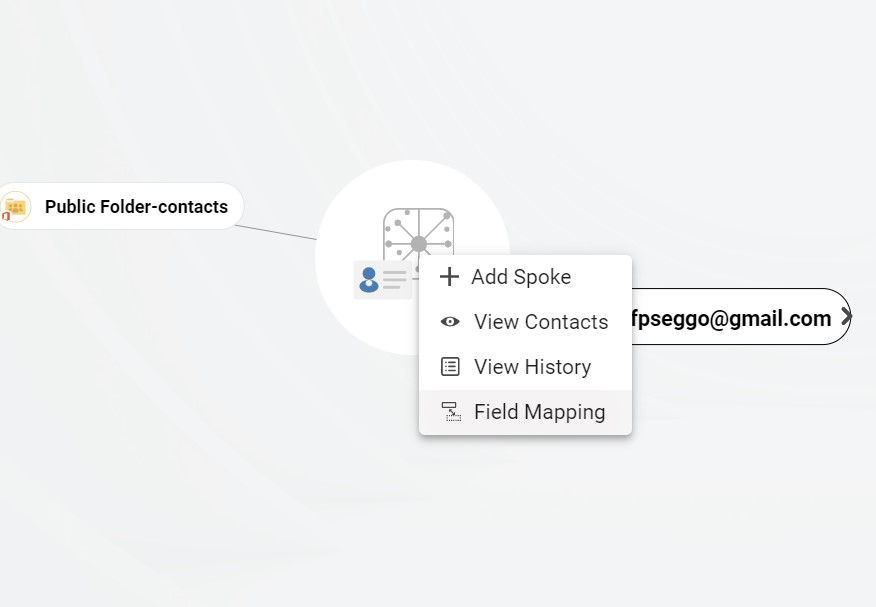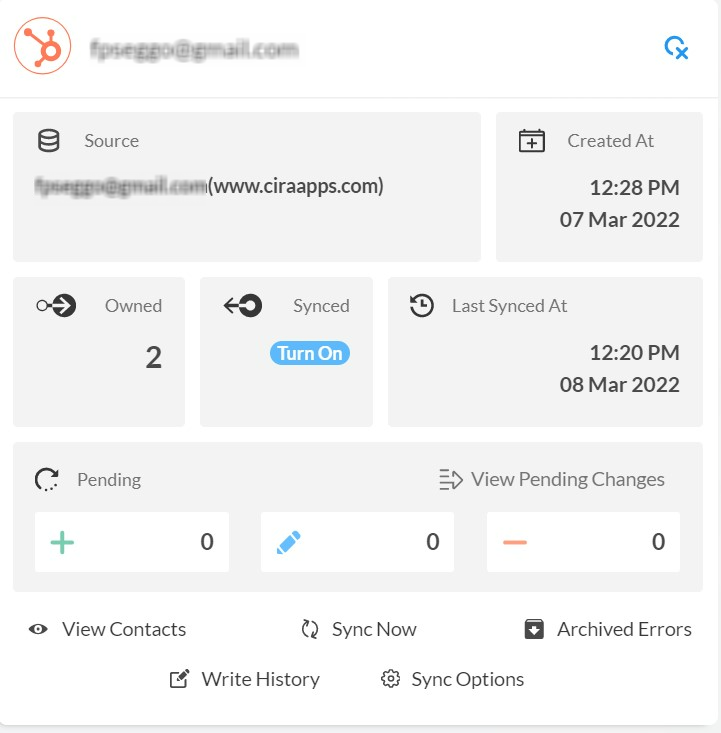Are you trying to find a solution to two-way sync contacts between HubSpot and a Microsoft 365 Public Folder? With CiraHub, users can seamlessly transfer data between HubSpot and your other applications without having to manually add data or go through laborious import processes. This article will outline how to enable a two-way contact sync between HubSpot and a Public folder contact list within the same organization.
Set Up a Two-Way Contact Sync Between HubSpot and a Microsoft 365 Public Folder
Step 1: Create a Spoke for HubSpot
1. First, Log in to CiraHub. You will be taken to the onboarding wizard. (See figure below.) Next, select the object you want to two-way sync contacts with. In this example, the contacts object has been selected.
2. Next start the Hub and Spoke setup. Click on “CRMs” as your source type for your contact spoke. (The Hub contains all synced Contacts from each spoke; a spoke can be a Public Folder, a user mailbox, the GAL or a CRM.)
3. Select “HubSpot” as the contact spoke type.
4. Click “Sign in” with Hubspot.
5. Sign in with your HubSpot Email and Password.
6. You will need to click on the “Connect App” option to link CiraHub to your HubSpot account in order to Two-way sync HubSpot. This will give CiraHub multi-way sync access to all of your contacts lists.
7. Type in a Spoke name and click next.
8. Type in a Hub name and click next.
Step 2: Create a Spoke for a Microsoft Public Folder
9. To add a Public folder Contact List to the Hub, Click on “Microsoft 365 In my tenant” and select Public Folder.
10. Select which “Public Folder” you want to Sync.
11. Type in a Spoke name and click NEXT.
12. Next type in a “Hub Name” and click CREATE in order to two-way sync public folder contacts.
Step 3: Activate a 2-Way Sync
13. Next, right-click your spoke, and select “Sync Options” in order to Two-way sync HubSpot with a Microsoft 365 Public Folder. You may also click on View Contacts to edit any contacts that were synced from your HubSpot account into CiraHub.
14. Click on “Allow Hub” to create and sync items in this spoke. This will allow users to Two-way sync HubSpot with a Microsoft 365 Public Folder from the endpoint to the hub database and back.
15. Click the Advanced tab to set up Contact filtering settings for Hubspot. This would enable a user to synchronize and create Hub items based on specific criteria. In the example below we are filtering based on email address types from your Hubspot contact lists and CRM data that have been synced over.
16. You can also enable Field Mapping to create customized Hub field settings for data in Active Campaign
.
17. Click on “Sync now” to two-way sync HubSpot with a Microsoft 365 Public Folder for the current spoke. You can also edit any synchronization options for each of your spokes below.
Learn More About CiraHub!
CiraHub allows users to easily two-way sync CRM contacts, Contact Lists, Public Folders, Shared Mailboxes & More Across Different Platforms. CiraHub makes these problems a thing of the past as the first-of-its-kind Multi-Way sync tool. CiraHub allows a single admin to merge, edit, and two-way sync multiple contact lists from different sources, such as HubSpot and a Public Folder. Click here to learn more about how you can start a CiraHub trial today!
